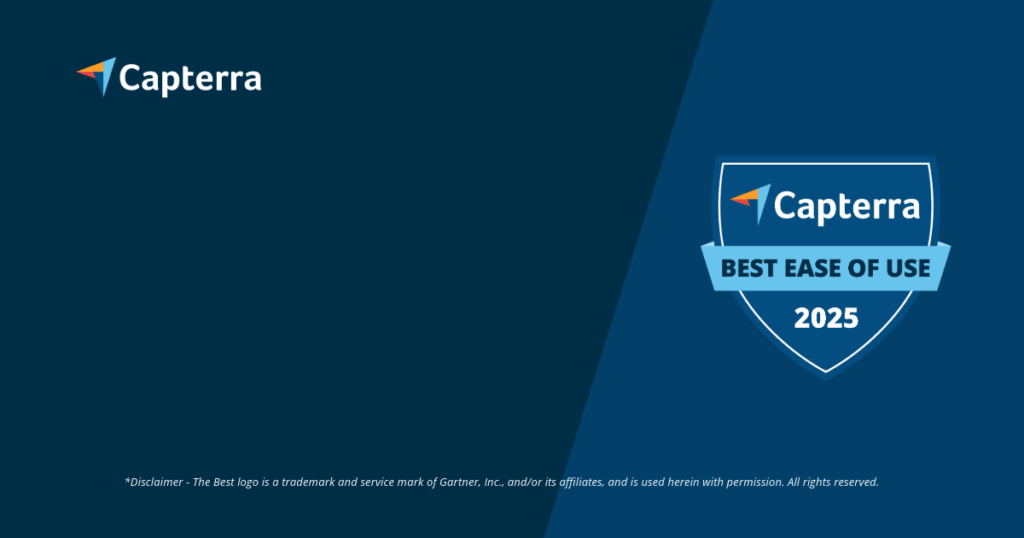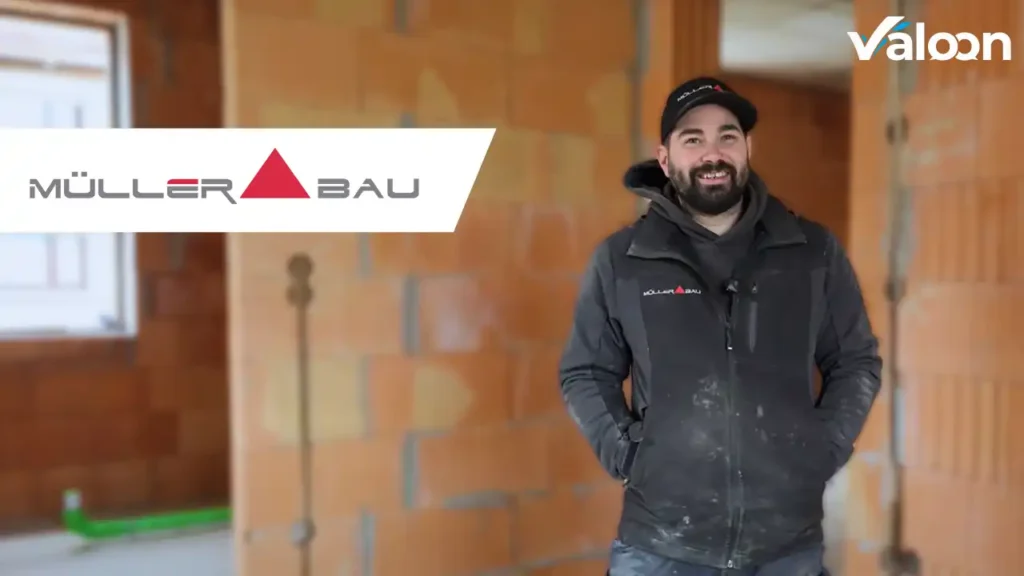Lean Management in Construction: Increasing Efficiency and Successfully Completing Projects
What exactly are lean management methods in construction?
Lean Management in Construction, often referred to as Lean Construction, is more than just a buzzword – it’s a genuine way of thinking, a management philosophy aimed at fundamentally optimizing processes in construction projects. The roots of this methodology can be found in Lean Management from the automotive industry, particularly the Toyota Production System, complemented by agile approaches from software development. The core goal is always to maximize the customer benefit while minimizing any waste – whether it be materials, time, or unnecessary effort. It’s about designing workflows so that a continuous flow is established, and activities that do not create direct value are consistently eliminated. This approach to lean management methods in construction is not limited to individual phases but takes the entire lifecycle of a building into perspective: from the initial idea through planning and execution to later use and even deconstruction. The application of Lean principles promises to revolutionize the way we manage construction projects.
- Philosophy of Optimization: A mindset for fundamentally improving construction processes.
- Core Objectives: Maximizing customer benefit while minimizing any waste.
- Continuous Flow: Designing workflows to eliminate standstills and non-value-adding activities.
- Holistic Perspective: Considering the entire lifecycle of a building, from the idea to deconstruction.
Why are lean management methods in construction indispensable?
The construction industry knows its challenges all too well: frequent project delays, significant cost overruns, and often suboptimal resource utilization are unfortunately common. This is where lean management methods in construction come into play and provide enormous potential for increasing efficiency. Studies and our practical experiences show that with the consistent application of Lean principles, projects can be accelerated by up to 30% . At the same time, the reduction of waste leads to noticeable cost savings and an improvement in construction quality. Another increasingly important aspect is the contribution to sustainability. By minimizing material waste and using resources more efficiently, lean management methods in construction make a significant contribution to a more environmentally friendly construction methodology. For us at Valoon GmbH, who provide software for process optimization in construction , supporting lean management methods in construction is a genuine core concern.
The core advantages of Lean Construction at a glance
The implementation of lean management methods in construction offers a wealth of tangible benefits for everyone involved in the project. Here are some of the most important positive impacts we repeatedly observe:
- Improved communication and collaboration: Through close coordination and transparent information flow, misunderstandings are reduced, and problems are proactively addressed. This fosters a culture of collaboration among all trades and stakeholders – something that is very close to our hearts.
- Increased productivity and efficiency: The optimization of workflows and the elimination of waste lead to better utilization of staff and machinery. Downtime is minimized, and overall productivity noticeably increases.
- Higher adherence to deadlines and cost control: More precise planning and control, for example through the proven Last Planner System, allow for a more reliable adherence to schedules and budgets.
- Increased quality and less rework: A focus on error-free processes from the start reduces defects and the need for costly rework. The result: a higher overall quality of the building.
- Increased customer satisfaction: By placing customer benefit at the center and completing projects on time and within budget, client satisfaction significantly rises – and that is ultimately our common goal.
At Valoon GmbH, we support you with our project management software for the construction industry to realize these benefits in your projects and effectively implement your lean management methods in construction. Explore with us how you can elevate your construction projects to a new level. Feel free to contact us for personalized consultation – we look forward to showing you how our solutions can tackle your specific challenges.The 5 Lean Principles: Foundation for Optimized Construction Projects
Precisely define customer value
The A and O, the first and most important principle of lean management methods in construction, is the consistent alignment with customer value. It’s about really understanding what the customer needs and for what they are willing to pay. In the context of lean management methods in construction, this means that all activities that do not directly contribute to creating this specific value are potentially considered waste. This customer-oriented perspective requires close coordination with the client – from the very beginning – and runs like a common thread through all project phases. It is crucial to identify the explicit and implicit expectations of the customer and use them as a benchmark for all decisions throughout the project. A clear definition of customer value helps us set priorities correctly and allocate resources effectively to deliver results that not only meet but exceed expectations.
- Customer value at the center: Absolute priority is given to the consistent alignment of all activities with the value defined by the customer.
- Needs analysis: A deep understanding of what the customer truly needs and for what they are willing to pay.
- Identifying waste: All activities that do not directly contribute to customer value are classified as potential waste.
- Collaborative definition: Close and early coordination with the client to determine customer value and expectations.
Analyze and optimize the value stream transparently
Once customer value is defined, we take a close look at the value stream. The value stream includes all processes and activities necessary to create a product or service – in construction, the finished building – from the first concept to handover to the client. Our goal is to visualize the entire value stream, clearly distinguish between value-adding and non-value-adding activities, and thus uncover bottlenecks or sources of waste. Methods like Value Stream Mapping are extremely helpful in this regard. By optimizing the value stream, we ensure that resources are used efficiently and lead times are shortened. The continuous consideration and adjustment of the value stream is a core aspect of successful lean management methods in construction and leads, as we repeatedly see, to a sustainable improvement in overall performance.
Optimize workflow and eliminate waste
The third principle of lean management methods in construction aims to create a smooth and uninterrupted workflow (flow) . Any disruptions, wait times, unnecessary transport of materials or tools, and superfluous movements of workers are considered waste and must be eliminated or at least minimized. A continuous flow ensures that work can transition from one process step to the next without delays. This naturally requires careful planning of processes, good coordination among trades, and the flexibility to respond to unforeseen events. The visualization of processes, for example through cycle planning, can help us optimize flow and detect bottlenecks early. Reducing inventories on-site through just-in-time deliveries is also an important lever for improving flow and a central element of lean management methods in construction.
Consistently apply the pull principle
The pull principle is about steering work and material flows based on the actual demand of subsequent process steps or the end customer. Instead of producing for stock or starting work before it is really needed (that would be the push principle), action is taken only when a signal comes from the next link in the value chain. This helps us avoid overproduction, unnecessary inventory, and wait times – all classic forms of waste. In construction, the pull principle can mean, for example, that materials are delivered to the construction site only when they are immediately needed for installation. Or that a trade begins its work only when the preceding trade has completed its work fully and in the required quality. Implementing the pull principle requires high transparency and excellent coordination of all parties involved, but it is a true key to efficient lean management methods in construction. aller Beteiligten, ist aber ein echter Schlüssel zu effizienten lean management methoden bauwesen.
Striving for perfection and continuous improvement (Kaizen)
The fifth principle, often referred to as Kaizen (Japanese for “change for the better”), describes the pursuit of continuous improvement of all processes and workflows. Lean Management is not a one-time project that you check off, but an ongoing journey. In the context of lean management methods in construction, it’s about establishing a culture where mistakes are seen as opportunities for improvement and employees at all levels are encouraged to contribute their suggestions for optimization. Regular reflections, for example through the PDCA cycle (Plan-Do-Check-Act), help identify deviations, analyze causes, and implement sustainable improvement measures. This relentless pursuit of perfection is the foundation for fully harnessing the potential of lean management methods in construction over the long term and creating a learning organization, which continuously evolves and adapts to new challenges. The optimization of construction planning is an ongoing process that we actively shape.Effective Lean Construction methods and tools for your construction project
Last Planner System (LPS): Collaboratively planning for reliable outcomes
The Last Planner System (LPS) is, in our experience, a central collaborative planning method within the lean management methods in construction. The key here is: It actively involves those who actually carry out the work – the so-called “Last Planners” such as foremen or team leaders from various trades. Instead of pure top-down planning, we rely on a realistic and binding detailed planning for the upcoming weeks, typically for a six-week horizon. In weekly meetings, the progress of the past week is evaluated (What was completed? What was not and why?), and the planning for the next week is detailed and agreed upon collaboratively. This participative approach greatly enhances engagement, uncovers potential obstacles early, and significantly increases the reliability of construction schedules. This is genuinely a powerful tool to boost process efficiency through lean management methods in construction.
Cycle planning/Control: Rhythmic processes for repetitive tasks
Cycle planning and control is another method of lean management methods in construction, particularly well-suited for construction projects with a high proportion of repetitive activities – think, for example, of multi-story residential construction or infrastructure projects. Similar to a production line in industry, we divide the construction project into spatial sections (cycles) and time units (cycle times). The various trades or work packages then proceed through these cycles in a defined sequence and speed. The goal is clear: to create a continuous, stable, and rhythmic workflow that minimizes wait times and maximizes productivity. Precise pre-planning and close coordination of capacities are, of course, essential for this. Cycle planning ensures high transparency in the construction process and allows for efficient management of resources, making it an important component of modern software for construction process optimization that we also develop.
Target Value Design (TVD): Value-oriented planning within budget constraints
With Target Value Design (TVD), we employ a collaborative planning approach within lean management methods in construction that cleverly reverses the traditional relationship between planning and costs. Instead of first developing a design and then calculating costs, TVD establishes a target cost framework (Target Value) at an early stage. This is based on the value expectations of the customer and the project requirements. All planning decisions are then aimed at realizing maximum customer benefit within this cost framework. This necessitates intensive collaboration among all stakeholders – clients, architects, specialist planners, and contracting companies – right from the start. Through continuous cost monitoring and iterative planning cycles, we ensure that the project meets the value objectives without exceeding the budget. TVD promotes transparency, reduces financial risks, and ensures that the final product optimally meets customer expectations.
Other supporting Lean tools
In addition to LPS, cycle planning, and TVD, there are of course a number of other tools and methods that support the application of lean management methods in construction and help us increase efficiency. Some of the key ones include:
- Value Stream Mapping: A visual method for representing and analyzing all steps required to create a product or service from start to finish. It helps us identify waste across the entire process and uncover improvement potentials.
- 5S Method: A systematic approach to workplace organization and design based on the five steps of sorting, systematizing (ordering), cleaning, standardizing, and self-discipline. The goal is a clean, safe, and efficient workplace for everyone.
- ConWIP (Constant Work in Progress): A production control system aimed at maintaining a constant amount of work-in-progress. This helps us avoid overload and ensure a steady flow.
These tools, often supported by software for increasing efficiency in trades, play a major role in integrating the principles of lean management methods in construction into daily practice and achieving continuous improvements.BIM and Lean Construction: Synergies for Digital Efficiency in Construction
BIM as the foundation: The central digital data base
Building Information Modeling (BIM) is a real game-changer and revolutionizes how we approach the planning, construction, and operation phases of buildings. It creates a central digital data base for all project participants. Imagine: Instead of dealing with isolated 2D drawings and countless documents, BIM enables the creation of an intelligent 3D model. This model links geometric information with a multitude of data such as material properties, costs, and schedules. From our perspective, this integrated data management is a crucial prerequisite for the successful application of lean management methods in construction. It enhances process visualization, allows for the automation of routine tasks, and fosters transparent collaboration between architects, engineers, construction companies, and the client. The digitization in construction through BIM lays the important groundwork for more efficient and streamlined construction processes, as demanded by lean management methods in construction.
How BIM Actively Supports Lean Principles
The integration of BIM and lean management methods in construction creates significant synergies – we see this repeatedly in practice. BIM supports the implementation of Lean principles and thus the lean management methods in construction in various ways: Through detailed 3D visualization, for example, we can identify potential clashes between trades or planning errors early on and rectify them. This reduces waste due to rework (very much in line with the principle: optimize flow). The central data platform enhances communication between site and office and coordination since all parties involved always have access to current and consistent information (principle: analyze value stream). Furthermore, the data richness stored in the BIM model allows for detailed analyses, for example regarding material quantity determination or the simulation of construction processes. We can then leverage this valuable data for continuous improvement (Kaizen) by evaluating processes and identifying optimization potentials. The combination of BIM and lean management methods in construction will lead, we are sure of this, to a significant increase in project efficiency.Successfully Implementing Lean Construction: A Roadmap for Your Construction Projects
Step-by-step to successfully implementing Lean Construction
The successful introduction of lean management methods in construction is not rocket science, but it does require a structured approach and, of course, the willingness to change in order to establish lean management methods in construction. From our experience, the following steps have proven particularly effective in practice:
- Holistic consideration of the project lifecycle (Lifecycle View): We recommend starting with an analysis of the entire project process – from the first idea to handover and even beyond. Identify key phases and interfaces to develop a comprehensive understanding of the value stream.
- Define clear milestones: Break down the overall project into manageable phases and define clear milestones and measurable goals for each phase. This creates transparency and allows for better progress control.
- Detailed and collaborative short-term planning: Utilize it for a detailed and realistic plan for immediate upcoming tasks (e.g., for the next 4-6 weeks). Very importantly: Actively involve the executing trades in this process!
- Visual representation of dependencies and processes: Use visual tools like flowcharts, cycle plans, or Kanban boards. This presents dependencies between tasks and the planned workflow clearly to all involved.
- Regular coordination and performance evaluation: Conduct weekly meetings. Here, you analyze the performance of the previous week (comparison of planned vs. actual), identify obstacles, and adjust planning for the upcoming week. This greatly promotes continuous improvement.
Consistently applying these steps will help you systematically anchor lean management methods in construction in your projects and sustainably increase efficiency – we are convinced of that.
Important success factors for sustainable Lean success
In addition to a structured approach, certain framework conditions and cultural aspects are crucial for sustainable success when implementing lean management methods in construction. For us, first and foremost is the early inclusion of all relevant trades and partners in the planning and optimization process. Their expertise is simply essential to develop realistic and efficient solutions. Equally important is the comprehensive training of employees in Lean Thinking and the specific methods of lean management methods in construction. Because only those who understand the principles can also apply them successfully. A transparent information policy and an open communication culture are the foundation for trust and collaboration – values that we uphold at Valoon. Finally, a cooperative project execution, based on shared goals and partnership, is essential to fully exploit the potentials of Lean Construction and thus the lean management methods in construction. The right software for effective construction management can significantly support these success factors and pave the way.Overcoming Challenges: Solutions for the Introduction of Lean Construction
Actively overcoming resistance to change
Honestly, one of the biggest hurdles in introducing lean management methods in construction is often the resistance to change of established ways of thinking and working.The construction industry is traditionally shaped, and new approaches understandably often meet skepticism. To overcome this resistance, it is crucial from our perspective to create a positive change culture.This is best achieved through transparent communication of the goals and benefits of Lean Construction, the active inclusion of employees in the change process, and the building of trust. Pilot projects can help make initial successes visible and promote acceptance. It is important to take concerns seriously and create a common basis for the Lean transformation through training and open discussions. Support from management is an absolute critical success factor for lean management methods in construction.
- Promoting a change culture: Establishing a positive attitude towards new methods is essential.
- Open communication: Clearly presenting the goals and benefits of Lean Construction to build trust.
- Involving employees: Actively involving the workforce in the transformation process.
- Making successes visible: Utilizing pilot projects to demonstrate effectiveness and increase acceptance.
- Top management commitment: Indispensable support and role modeling from the leadership.
Closing knowledge gaps through targeted training
Another stumbling block we encounter in practice is the lack of specific knowledge and experience with lean management methods in construction. Many employees and managers are simply not familiar with the principles and tools of Lean Management. Targeted investments in training and education are essential. This can occur through internal training, external seminars, or bringing in experienced Lean consultants. Particularly effective, as we’ve experienced, are simulation workshops (e.g., with Lego bricks), where participants can practically experience the principles and benefits of Lean Construction. A solid foundation lays the groundwork for successful application in day-to-day project life and helps to implement lean management methods in construction correctly and effectively.
Managing the complexity of construction projects with digital tools
Construction projects are often characterized by high complexity, numerous interfaces, and unpredictable influences – we all know this. This complexity can naturally make the implementation of lean management methods in construction more difficult. Therefore, it is important to adapt Lean methods flexibly to the specific requirements of each project, rather than imposing rigid guidelines. Digital tools and software solutions play a crucial role here, and that’s where we come in at Valoon. They enable better planning, control, and monitoring of complex processes. Platforms for lean construction management can, for example, help digitalize the Last Planner System, visualize cycle plans, and improve communication among all parties involved. By intelligently using technology, complexity can be managed, and the efficiency of lean management methods in construction can be significantly increased.Digital assistants: Software solutions for efficient Lean Construction Management
The key role of software in the Lean Construction process
Modern software solutions are, in our view, an absolutely indispensable tool for the successful implementation of lean management methods in construction.. They not only support the visualization of complex construction processes and allow for quick adjustments to changing conditions, but also significantly facilitate communication and collaboration among all project participants – a point that is particularly important to us. Through digital platforms, information can be shared in real-time, tasks assigned transparently, and progress documented seamlessly. This greatly reduces administrative effort and creates space for truly value-adding activities. Furthermore, many software solutions allow for the systematic collection and analysis of process data, which provides a solid foundation for continuous improvement (Kaizen) in line with lean management methods in construction. Thus, the use of the right software is a decisive factor for increasing efficiency through lean management methods in construction.
Valoon GmbH: Your solution for simple and effective construction processes
This is where we come into play: At Valoon GmbH, we are committed to sustainably improving the communication and project management in the construction industry, particularly through the application of lean management methods in construction. Our cloud-based SaaS platform is specifically designed to optimally support the principles of lean management methods in construction. A core feature of our solution, which we are proud of, is the seamless integration of popular messaging services like WhatsApp. This allows field workers to continue using their familiar tools while the information exchanged through them is automatically structured and transformed into valuable, usable project data. Features such as our central task management, an intelligent reporting system (e.g., for photo documentation and daily reports), and a cloud-based project repository significantly simplify data collection and processing. With Valoon, you lower the entry barriers for digitalization and make your lean management methods in construction even more effective. Feel free to learn more about our software for process optimization in construction.Lean Construction in Action: Success Stories and Valuable Insights
How Lean Methods Transform Construction Projects: Concrete Successes
The application of lean management methods in construction has, we can confirm, led to truly impressive improvements in numerous projects worldwide, when lean management methods in construction were applied consistently. Although specific, detailed case studies often remain internal to companies, general reports and analyses consistently show positive results, which we also see in our work. For example, by implementing the Last Planner System, the reliability of weekly planning was often increased from below 50% to over 80% . This directly leads to fewer unplanned interruptions and better utilization of resources – a huge gain! Projects that consistently rely on takt planning report reductions in overall construction time of 15-30% while simultaneously reducing construction costs. Early collaboration within the framework of Target Value Design helps to avoid expensive re-planning in later project phases and ensures that the budget is adhered to while maximizing customer value. These successes impressively underline the enormous potential of lean management methods in construction.
Lessons Learned: Key to Success and Managing Challenges
From the multitude of projects that have implemented lean management methods in construction, valuable insights can be derived, which we are happy to share with you. A central success factor is, in our experience, the commitment of management and a clear commitment to Lean as a strategic orientation for lean management methods in construction. Without this backing, sustainable change is hardly possible. Early and continuous training of all participants is just as crucial as creating a culture of openness towards mistakes, where problems are seen as opportunities for improvement – this is living Kaizen. Challenges often lie in overcoming old habits and integrating Lean principles into existing company processes. It has been shown that small steps and pilot projects are often more successful than a radical upheaval. And of course, selecting suitable software tools that support and communication between site and office simplify the Lean processes is another important aspect for long-term success with lean management methods in construction.Shaping the Future: Trends and Developments in Lean Construction
Digital technologies as drivers: BIM, IoT, and AI on the rise
When we look to the future, we see that lean management methods in construction will be significantly shaped by ongoing digitalization. The integration of Building Information Modeling (BIM) is already an important factor today, but technologies such as the Internet of Things (IoT) and Artificial Intelligence (AI) open up entirely new possibilities, which excite us. IoT sensors can, for example, provide real-time data from the construction site – about the condition of machines, material stocks, or environmental conditions – thus enabling even more precise control of processes. AI algorithms, in turn, can analyze vast amounts of data to recognize patterns, make predictions (such as about potential delays), and generate optimization proposals. The use of drones for monitoring construction progress and data collection will also increase and further enhance transparency. We are convinced: These digital tools will elevate the effectiveness of lean management methods in construction to a new level and enable even more precise, data-driven project execution.
Sustainability and Circular Economy: Lean as a Pioneer
The growing focus on sustainability and the principles of the circular economy will further influence and, as we believe, strengthen lean management methods in construction in the future. Lean aims to minimize waste by definition – this concerns not only time and costs but also materials and resources. Through optimized planning and logistics, material waste can be reduced, and energy consumption lowered. Lean principles also support innovative concepts such as Design for Disassembly. In this approach, buildings are designed so that components can easily be separated and reused or recycled at the end of their life cycle. The reduction of the ecological footprint of construction projects thus becomes an integral part of lean management methods in construction. Companies that successfully implement Lean are therefore also better equipped to meet the growing demands in sustainable construction.
Evolution of Lean Methods: Adapting to New Challenges
Lean management methods in construction are not static concepts but continuously evolve to meet the changing demands of the construction industry – a development that we want to actively shape. Existing methods like the Last Planner System or takt planning are expected to be refined further and supplemented by new approaches. The integration of agile project management methods, which originally come from software development (think of Scrum or Kanban), is also gaining importance in construction to increase flexibility and adaptability in complex projects. Research will bring forth new tools and techniques to improve collaboration, increase process stability, and further maximize value creation. The ability for continuous adaptation and learning will become increasingly important for companies that want to succeed with lean management methods in construction. We at Valoon GmbH closely monitor these developments to continuously optimize our project management software for the construction industry services and provide you with the best tools for your Lean transformation.
The introduction of lean management methods in construction is a genuine investment in the future viability of your company. It not only enables more efficient and cost-effective projects but also enhances the quality and satisfaction of your customers and employees. If you are ready to optimize your construction processes and benefit from Lean Construction, we are more than happy to support you. Contact us today for a personalized consultation and find out how Valoon can help you make your projects more successful. Register for free and start your journey to leaner construction processes with us!
What are the biggest benefits of Lean Management Methods in construction for my company?
Lean Management Methods optimize construction processes, which leads to significant cost reductions, accelerated project times (up to 30%) and a higher construction quality results. Additionally, it improves the team collaboration.
How can I implement Lean Management Methods in my construction business?
Start with an analysis of your current processes, train your team in the Lean principles and start with pilot projects. The gradual introduction, supported by digital tools, facilitates the transition.
What role does software like Valoon play in the implementation of Lean Construction?
Software like Valoon simplifies data collection directly from the construction site (e.g., via WhatsApp), automatically structures information and improves the information flow between field staff and office, which is essential for Lean.
Is Lean Management also suitable for smaller construction companies?
Yes, absolutely! Lean Management is not dependent on company size, but on the process orientation. Smaller companies often benefit particularly from better planning and less waste.
What is the Last Planner System (LPS) and how does it help?
The LPS is a collaborative planning method, where the executors (“Last Planner”) create the detailed planning. This results in more realistic plans, and higher reliability und with fewer disruptions in the construction workflow.
How do Lean methods help reduce construction defects?
By focusing on standardized processes, continuous improvement (Kaizen) und early error detection Lean methods minimize the causes of defects and thus reduce costly rework.
How can I inspire my team for Lean Management?
Show the concrete benefits for each individual , such as less stress through better planning und smoother processes. Involve your team early on and celebrate shared successes..
Do Lean Management Methods also improve sustainability in construction?
Yes, because one core goal is the reduction of waste – this concerns materials, energy, and resources. More efficient processes and less waste directly contribute to a more sustainable construction method .






